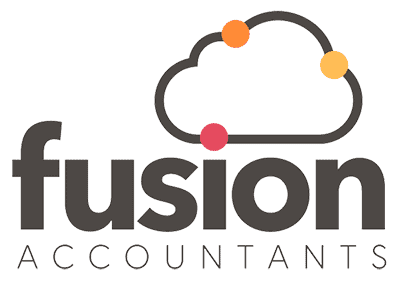A comprehensive guide on the basics of HMRC self assessment tax return
Reading Time:
What is HMRC self assessment tax return
Normally, taxes come out of our pay or pension automatically. However, to collect taxes from individuals, sole traders, self employed and property landlords who are engaged in business activities or have sources of income other than employment, HMRC has deployed a system of self assessment. Under self assessment, all of those people who need to register for self assessment and file a tax return, need to declare their income earned and expenses incurred during the tax year from relevant sources like trading income, rental income, investment income, and capital gains, calculate tax liability, if any, and pay it to the HMRC. The tax year runs from 6 April to 5 April of the following year. The following table shows self assessment timeline.

Steps in HMRC Self assessment
1. Apply for a Unique Taxpayer Reference UTR to register for self assessment. It is a 10-digit identifier assigned to individuals and entities for tax purposes.
To apply for a UTR, please follow the link on the HMRC website.
2. Have your records to hand. Do your bookkeeping or hire an accountant to do it for you. In either case, you will need to organize yourself to keep a proper accounting record.
Optimize your tax return with confidence – entrust Fusion Accountants for expert financial guidance and unparalleled accounting support.
3. Do your income tax computation. This will include the calculation of your taxable income and your tax liability. Taxable income is broadly categorized into non-saving income, saving income, and dividend income. Non-saving income is made up of employment income, trading income from self employment, and property income.

* Trading profit is calculated by subtracting allowable business expenses from total income, resulting in the taxable profit figure. You can further reduce your taxable profit by claiming available capital allowances against eligible capital expenses and prior trading losses.
If you want to know more about what expenses you can claim to minimise your taxes, please read self employed allowable expenses guide by Fusion Accountants.
**Employment income, salaries or wages, must be included gross in the tax return before the deduction of taxes by the employer.
*** Income from property is typically calculated by subtracting allowable expenses from the total rental income. Allowable expenses may include mortgage interest, property maintenance costs, letting agent fees, and other relevant expenditures.
If you are a property landlord and want to know more about rental income and allowable expenses, please read the guide to Rental Income and Expenses by Fusion Accountants.
3. File your tax return.
4. Pay your tax bill.
Who needs to do self assessment
Individuals who need to do self-assessment typically fall into one of the following categories:
1. Self-Employed Individuals: If you are self-employed, a sole trader, or a partner in a business, you are generally required to complete a self-assessment tax return. This includes reporting your business income, expenses, and calculating the tax you owe.
However, if your income did not exceed £1,000, then you do not need to file self assessment tax.
2. Landlords: If you earn rental income from property you own, you may need to complete a self-assessment tax return to report that income and any related expenses.
Property income is not classified as income from a trade like running a restaurant or a shop and so not included as part of self employment income. If your gross rental income is more than £1,000 but less than £10,000 and net rental income (profit) less than £2,500, you should contact HMRC to see if tax on rental profit can be collected via PAYE and dispense with filing a tax return.
3. Company Directors: Directors of limited companies may need to complete a self-assessment tax return, especially if they receive income or benefits not covered by PAYE (Pay As You Earn).
4. High Earners: Individuals with income that is not taxed at source or whose income exceeds a certain threshold like £50,000 and £100,000 may be required to complete a self-assessment tax return. This can include income from investments, savings, or other sources. For example, if you receive child benefits and your income exceeds £50,000 you will have to suffer a child benefit charge and complete a tax return.
5. Individuals with Complex Tax Affairs: If your financial affairs are more complex, you may be required to complete a self-assessment tax return. This could include individuals with multiple sources of income, significant capital gains, or other complexities.
This will be the case if you receive a notice from the HMRC to file a tax return.
6. People Receiving Foreign Income: If you are a UK resident but receive income from abroad, you may need to report that income on a self-assessment tax return.
There may be some other reasons to file a tax return like as under;
- Claim income tax reliefs available.
- If you are asked to prove your self employment e.g. to claim maternity allowance.
- Pay voluntary national insurance contributions.
If you want to check if you need to file a tax return, please follow the link on the HMRC website.
What do I need for self assessment?
To file a tax return in the UK, you will typically need certain information and documents. Here is a general checklist of what you may need:
Personal Information
- UTR
- National Insurance Number (NINO)
- Address and contact details.
- Date of birth.

Government Gateway account
If you are filing online, you will need to have access to your HMRC online account. For this, you will need a Government Gateway user ID and password.
If you do not have a Government Gateway account, you will need to your identification documents like Passport, DVLA, payslip or P60.
Income Information (sources of income)
- Details of your employment income, including P60, P11D and P45 forms.
- Self-employment income: Records of income and allowable expenses.
- Rental income: Details of rental income and allowable expenses.
- Pension income: Information about your pension income.
- Benefits and other income sources.
Savings and Investments
- Details of savings interest received.
- Statements for dividends received.
- Information on any other investment income.
Tax Credits and Deductions
- Details of any tax credits you may be eligible for like Enterprise Investment Scheme (EIS)
- Credit against overpaid tax under CIS
- Documentation for deductible expenses, such as charitable donations or work-related expenses.
Student Loan Information
If applicable, details of any student loans and repayments.
Capital Gains
Information on any capital gains or losses from the sale of assets like shares, property, etc.
Pensions and Contributions
Information on pension contributions and relevant statements.
Other Relevant Documents
Any other relevant documents, such as details of foreign income, if applicable.
Records and Documentation
Keep any supporting documentation for the figures you include in your tax return, as HMRC may request evidence if they decide to check your return.
UK tax rates and allowances for 2023/24
Tax rates on earned income vary across three bands: the basic rate at 20%, the higher rate at 40%, and the additional rate at 45%, applicable for the tax year 2023/24. Personal allowance is the amount of income you earn that is tax-free.
| Band | Taxable income | Tax rate |
|---|---|---|
| Personal Allowance | Up to £12,570 | 0% |
| Basic rate | £12,571 to £50,270 | 20% |
| Higher rate | £50,271 to £125,140 | 40% |
| Additional rate | over £125,140 | 45% |
Personal allowance 2023/24
The personal allowance is the amount of income an individual can earn before they are required to pay income tax. Currently, it is £12,570.
Also Read: FreeAgent Integration with GoCardless. How it actually works
Dividend tax rates UK 2023/24
The tax-free dividend allowance for 2023/24 is £1,000. The dividend allowance in the UK is the amount of dividend income an individual can receive tax-free within a tax year. The dividend tax rate depends on your income tax band as under;
| Tax band | Tax rate on dividends over the allowance |
|---|---|
| Basic rate | 8.75% |
| Higher rate | 33.75% |
| Additional rate | 39.35% |
Personal Saving Allowance
Depending on your Income Tax band, you could receive up to £1,000 in interest without incurring tax; this allowance is referred to as your Personal Savings Allowance.
To calculate your tax band, add all the interest you’ve received to your other income.
| Income Tax band | Personal Savings Allowance |
|---|---|
| Basic rate | £1,000 |
| Higher rate | £500 |
| Additional rate | £0 |
UK Capital gains tax rate and allowances 2023/24
The standard rate of capital gain tax (CGT) for a basic rate taxpayer is 10% while the rate for a higher rate taxpayer is 20% except capital gain on property. CGT rate on the disposal of a residential property is 18% for a basic rate taxpayer while it is 28% for a higher rate taxpayer.

CGT exemptions
- Private vehicles
- Cash
- Gifts to registered charities in the UK
- Foreign currency for own use
- Lottery winnings
CGT allowances and reliefs
- Capital gains within the annual exempt amount remain tax-free. This allowance is £6,000 for 2023/24.
- Gifts between spouses or civil partners are exempt from Capital Gains Tax (CGT).
- Typically, your primary residence is not subject to CGT.
- Gains can be deferred by reinvesting in Enterprise Investment Scheme (EIS) shares/SEIS.
- Certain trust contributions may qualify for ‘heldover’ status.
- Business owners can potentially pay a reduced 10% CGT on business sales through entrepreneurs’ relief.
This list above includes some of the well-known CGT exemptions. There may be some other exemptions available depending on your particular circumstances. It is always recommended to consult a tax advisor in complicated financial arrangements.
Income exempt from income tax
Some main types of income that are typically exempt from UK income tax include:
Gifts and Inheritance: Inheritances and most gifts between spouses and civil partners are exempt from income tax as mentioned above.
ISAs (Individual Savings Accounts): Income generated within ISAs is tax-free.
Premium Bond Winnings: Winnings from Premium Bonds are not subject to income tax.
Certain State Benefits: Some state benefits may be tax-free, such as Child Benefit, and universal credit.
Rent-a-Room Scheme: Rental income from the Rent-a-Room Scheme may be exempt up to a certain limit of £7,500 currently.
Pension lump sum
A pension lump sum withdrawal is tax-exempt as long as the withdrawal does not exceed 25%.
When do I need to file tax return?
If you are completing a paper tax return, it must be submitted by midnight on October 31, following the end of the tax year.
For an online tax return, the submission deadline is midnight on January 31, following the end of the tax year.
Also Read: Need to know about PAYE forms
How to complete and file a tax return?
Once you have your login details and figures of income and expenses to hand, you can start the process of filing a tax return. Below, we will briefly explain the different self assessment forms and the different sections included in them. The main Form is called SA100. Links to other supplementary pages of the SA100 are given in the table below.
| Page No. | Boxes | Section | Guidance notes |
|---|---|---|---|
| Page TR 1 | 1-4 | Starting your tax return Your personal details | UTRNINODate of birthName and address |
| Page TR 2 | 1 | What makes up your tax return Employment | If you were in employment during the tax year, you will need to fill in a separate employment page SA 102. |
| Page TR 2 | 2 | Self employment | If you were self employed doing business, you will need to fill in the Self-employment page SA103S or SA103F. Enter any payments or expenses related to that business. |
| Page TR 2 | 3 | Partnerships | You will need to fill in the Partnership page SA104S or SA104F if you were in a business partnership. |
| Page TR 2 | 4 | UK property | If you received property income, you will need to fill in the property page SA105. |
| Page TR 2 | 5 | Foreign | If you received foreign income or want to claim relief for foreign tax paid, you will need to fill in the foreign page SA106. |
| Page TR 2 | 6 | Trusts | If you received income from a trust, you will need to fill in this page. |
| Page TR 2 | 7 | Capital Gains Tax summary | If you sold stocks, property or a business, you will need to complete the ‘Capital Gains Tax summary’ page SA108. |
| Page TR 2 | 8 | Residence, remittance basis etc | You will need to fill in this page SA109 if you were non-resident for the whole or part of the tax year. |
| Page TR 2 | 9 | Additional information | Some less common kinds of income and tax reliefs, for example, Married Couple’s Allowance, Life insurance gains, chargeable event gains etc |
| TR 3 | Income | ||
| TR 3 | 1-7 | Interest and dividends from UK banks and building societies | Taxed and untaxed interest from UK or non UK UK and non UK Dividends including tax taken off from foreign dividends. |
| TR 3 | 8-16 | UK pensions, annuities, and other state benefits received | State pension and tax taken offPensions (other than State Pension), retirement annuities, and taxable lump sums treated as pensions.Taxable Incapacity Benefit and contribution-based Employment and Support Allowance.Jobseeker’s Allowance |
| TR 3 | 17-21 | Other UK income not included on supplementary pages | Any other income and expenses not to be reported in supplementary pages. |
| TR 4 | Tax reliefs | ||
| TR 4 | 1-4 | Paying into registered pension schemes and overseas pension schemes | Here you will need to enter details of payments to registered pension schemes, a retirement annuity contract, , Payments to an overseas pension scheme, which is not UK-registered, which are eligible for tax relief and were not deducted from your pay before tax. |
| TR 4 | 5-12 | Charitable giving | Gift Aid payments |
| TR 4 | 13-16 | Blind Person’s Allowance | If you want to claim this allowance being visually impaired |
| TR 5 | 1-3 | Student Loan and Postgraduate Loan repayments | If your employer has deducted Student Loan or postgraduate loan repayments enter the amount deducted enter in these boxed |
| TR 5 | 1-3 | High Income Child Benefit Charge | If you or your partner’s income exceeds £50,000 and you claim child benefits |
| TR 5 | 1-2 | Incorrectly claimed coronavirus support scheme payments | If there was any incorrect claim, enter the amount in these boxes. |
| TR 5 | 1-5 | Marriage Allowance | If you want to transfer a personal allowance £1260 to your spouse or civil partner |
| TR 6 | Finishing your tax return | ||
| TR 6 | 1 | Tax refunded or set off | If you were refunded tax for last tax year, enter an amount here in this box |
| TR 6 | 1-3 | If you have not paid enough tax | Enter any unpaid tax for last year |
| TR 6/ TR 7 | 4-18 | If you have paid too much tax | If you are due a refund, will show here |
| TR 7 | 19 | Any other information | |
| TR 8 | 20-26 | Signing your form and sending it back | Here you will need to tell HMRC if the figures are provisional and who is signing the return |
When you start filling in the details, you will see that you will be asked a series of questions. A Yes or No will lead you to different sections tailoring the tax return as per your circumstances. If you input any information wrong, the box will light up and tell you. Following is a link to a very useful video from the HMRC explaining the navigation through the tax portal.
If you want to check if you need to file a tax return, please follow the contact Fusion Accountants who are experts in tax returns.
Checklist to minimize your income tax
Before finalizing your tax return, go through some of the most common reliefs and allowances available to minimize your income tax bill. We have mentioned some of those above.
| Personal Allowance | Ensure you benefit from the tax-free threshold on your income. | £12,570 p.a |
|---|---|---|
| Marriage Allowance | Transfer a portion of your personal allowance to your spouse or civil partner. | Reduce your tax bill by £250 p.a |
| Blind Person’s Allowance | If applicable, claim an additional allowance for being visually impaired. | £2,870 p.a |
| Dividend Allowance | Utilize the tax-free allowance on dividend income. | £1,000 p.a |
| Savings rate band | Tax free savings on interest income | £18570 if you do not have any other source of income i.e non saving or dividend income |
| Capital Gains Tax Allowance | Take advantage of the tax-free threshold on capital gains. | £6,000 p.a |
| ISA Contributions | Invest in Individual Savings Accounts (ISAs) for tax-free savings. | Upto £20,000 p.a |
| Pension Contributions | Contribute to your pension to benefit from tax relief. | Upto £60,000 p.a |
| Enterprise Investment Scheme (EIS)/SEIS | Invest in qualifying EIS shares for potential CGT deferral. | 30% relief for EIS and 50% relief for SEIS against the income tax bill |
| Gifts and Inheritance | Be aware of tax exemptions for gifts and inheritances. | exempt if made to spouse or partner |
| Rent-a-Room Scheme | If applicable, earn tax-free income from renting a room in your home. | £7,500 |
How to pay my tax?
Following is a general overview of how self-assessment tax is paid in UK:
1. Payments on Account
- Payments on account are usually made twice a year – by January 31 and July 31.
- These payments are advance payments towards your tax bill for the current tax year.
2. Final Payment
The final balancing payment is due by January 31 following the end of the tax year (e.g., January 31, 2024, for the tax year ending April 5, 2023). This payment settles any outstanding tax liability for the tax year after accounting for payments on account.
If you want in-depth understanding of how payments on account work, read our article.
3. Payment Methods
- Online: Payments can be made online through the HMRC website using various methods such as bank transfer, debit or credit card.
- Direct Debit: You can set up a Direct Debit to pay HMRC automatically.
- Bank Transfer: You can make a payment directly from your bank account to HMRC.
To pay your self assessment tax, please follow the link “Pay your self assessment tax bill“.
4. Reference Number
When making a payment, it’s crucial to use the correct reference number, which is unique to you and your tax account. This ensures that the payment is correctly attributed to your tax liability. This is your 10-digit Unique Taxpayer Reference (UTR) followed by the letter ‘K.
5. Late Payments
Late payments may incur interest and penalties, so it’s important to pay on time. You will need to pay
£100 for being late in filing for upto 3 months.
You can manage your self-assessment tax payments through your online HMRC account.
Ensuring that payments are made on time is crucial to avoid penalties and interest charges.
If you have missed the self assessment deadline and are worried about your next step, please read our guide “What happens if you miss tax return deadline?”
Conclusion
Self assessment is a system of HMRC to collect taxes. Generally, anyone who has untaxed income over £1,000 will need to register for self assessment and file a tax return. You will need your Government Gateway user ID and password to file your tax return online. You will need to keep a proper record of your income and expenses to compute your taxes. You will need to fill in SA100 and the applicable supplementary pages. HMRC has a lot of guidance material on this whose links have been shared above.
Every year, Fusion Accountants assists hundreds of clients in fulfilling their HMRC obligations, providing expert guidance and ensuring a seamless completion of self-assessment tax returns. Let us help you; Contact us today for a free consultation.







